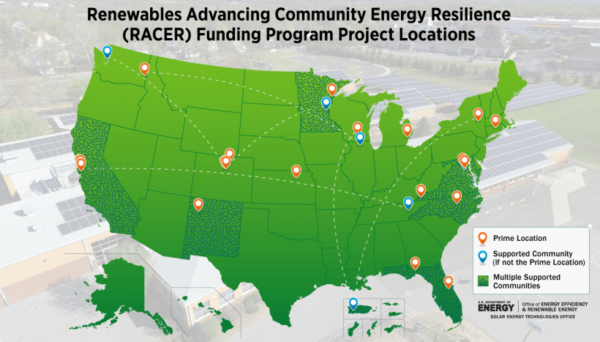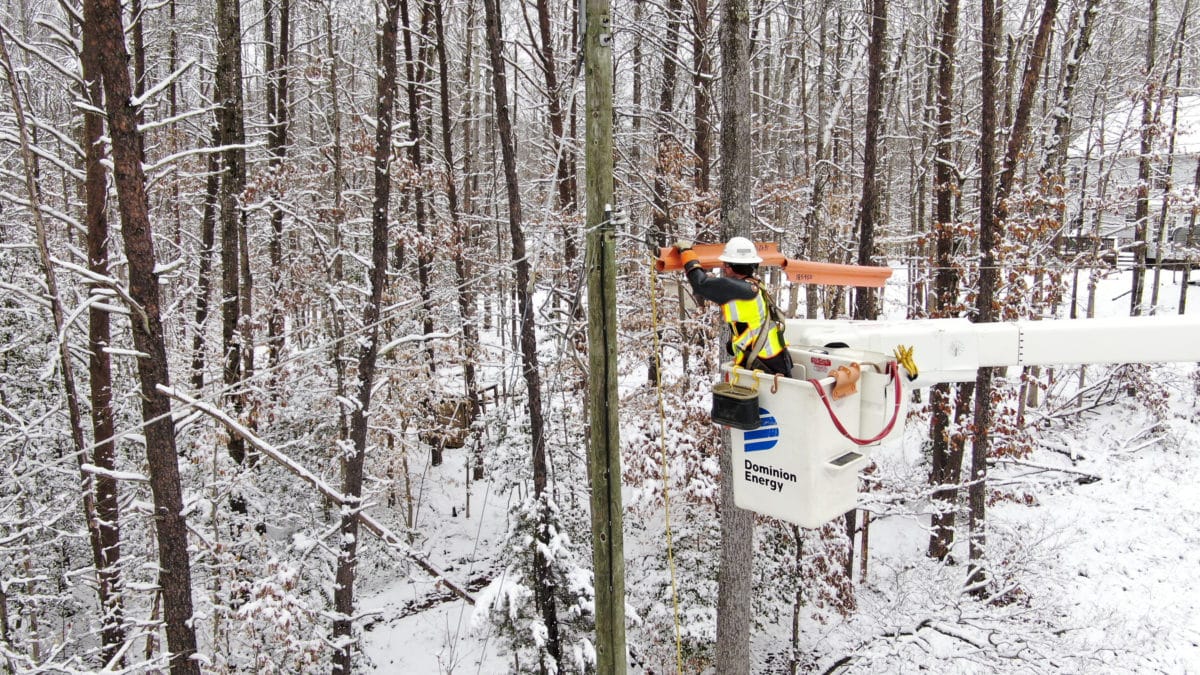As storms intensify and increase their frequency, the University of Connecticut (UConn) has partnered with investor-owned utility Eversource to develop clean energy solutions to prepare communities for power outages, aiming at shortening restoration times.
The two organizations partnered for Eversource Energy Center, the university’s resiliency center which recently received a $4.4 million grant from the Solar Energy Technologies Office (SETO), which is operated by the Department of Energy (DOE). The resilience funds are provided through SETO’s Renewables Advancing Community Energy Resilience program. DOE will provide $3 million to the program, while the Eversource Energy Center will bear $1.4 million of the cost.

The Eversource Energy Center will leverage its Outage Prediction Model to forecast the impact of storms, using meteorological data to proactively position power restoration crews in advance of inclement weather.
The funds will also support the development of distributed energy resources and predictive software to achieve the goal of faster response times. Dubbed PROACTIVE (predictive community outage preparedness and active last mile visibility feedback autonomous restoration), the project is aimed at developing and demonstrating a predictive community outage preparedness and restoration solution.
The project will also help ensure rapid power restoration to remote and rural areas that often experience the longest power outage times following extreme weather events.
“Due to the lack of proper outage prediction tools, stakeholders face challenges to forecast infrastructure damages and their severity ahead of time, thus significantly affecting outage preparedness,” said Junbo Zhao, associate director of the Eversource Energy Center. “After extreme events, there is also a lack of robust sensing and communication systems to allow quick estimation of infrastructure damage and availability of assets and energy resources to aid the rapid restoration.”
Zhao said PROACTIVE will leverage grid visibility for a more informed, safe, coordinated, and automated response. It will rely on granular data and sensors to more rapidly identify the localized source of the outage.
It will also depend on cooperation among communities, leaning on affluent communities who have more distributed solar and storage resources to assist those without distributed assets. For example, an affluent town like West Hartford could provide surplus power to a neighboring municipality such as Hartford, said Zhao.
The PROACTIVE team is currently engaged with community leaders and stakeholders in West Hartford and Hartford to demonstrate the technologies and how they can benefit each city. The project is expected to take three years to develop and implement.
“Climate change is one of the greatest challenges that we face as a society, and the intensity and frequency of storms is only going to increase,” said Pamir Alpay, UConn’s interim Vice President for research, innovation, and entrepreneurship. “Working with our partners at Eversource, we are committed to developing technology and advancing research to enhance our ability to mitigate the impact of these storms and keep Connecticut residents safe.”
Energy resilience and affordability is a key focus on Connecticut’s capital city of Hartford. Hartford established a local agency called the Energy Improvement District (EID) to pursue sustainability and energy related goals for the city in the long-term. It released a comprehensive plan in 2019, which shared that the energy burden, or energy bill as percent of income, for households at the 50% poverty level is staggering at 33%. The average home energy affordability gap is $1,922 per household per year. And the state’s Home Energy Assistance Program covers only 33% of this gap. Federal programs like SETO’s RACER program and other provisions in the Inflation Reduction Act of 2022 are aimed at tackling these kinds of problems.
This content is protected by copyright and may not be reused. If you want to cooperate with us and would like to reuse some of our content, please contact: editors@pv-magazine.com.









By submitting this form you agree to pv magazine using your data for the purposes of publishing your comment.
Your personal data will only be disclosed or otherwise transmitted to third parties for the purposes of spam filtering or if this is necessary for technical maintenance of the website. Any other transfer to third parties will not take place unless this is justified on the basis of applicable data protection regulations or if pv magazine is legally obliged to do so.
You may revoke this consent at any time with effect for the future, in which case your personal data will be deleted immediately. Otherwise, your data will be deleted if pv magazine has processed your request or the purpose of data storage is fulfilled.
Further information on data privacy can be found in our Data Protection Policy.